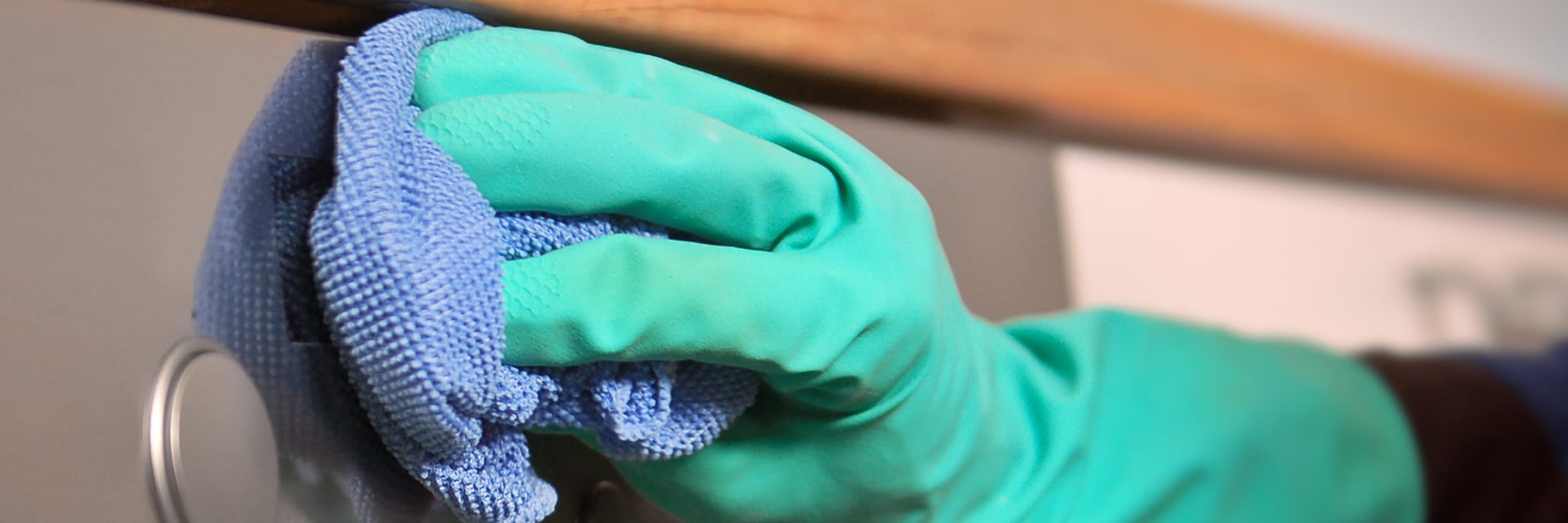
The Coronavirus (COVID-19) raises new challenges and underscores a longstanding focus in the hospitality and healthcare industry--food safety and surface sanitation. The National Institutes for Health, the CDC, UCLA and Princeton University scientists all report that the Coronavirus can remain stable for hours or even days on surfaces and in aerosols. It's imperative that we develop best practices in cleaning and sanitizing and make these a longstanding priority.
Critical Devices in Infection Prevention
Cleaning and sanitizing paired with handwashing and social distancing are critical devices in infection prevention. Cleaning (detergent) removes the dirt and grime while sanitizing removes the viruses and pathogens. To sanitize against viral pathogens, specifically Coronavirus, the EPA recommends active ingredients found in disinfectant products, including (citric acid, ethanol, hydrogen peroxide, isopropanol, quaternary ammonium, and Sodium Dichloro-S-Triazinetrione).
"The key to proper sanitation is making sure agents are used with the correct dilution ratio"
Know Your Hazards
Most restaurants have sidelined table service for the foreseeable future. Drive-throughs, carryout and meal delivery services now strive to keep up with customer demand. Long term and acute care facilities practice diligence in safe meal service to residents and patients and while keeping their staff secure. From loading docks to dining rooms, our operations are nothing but surfaces. Every counter, shelf and box is a potential surface hazard. Cardboard is not cleanable. The best practice is to store goods in your own sanitized containers. Don't forget, knives, utensils, cutting boards and equipment.
Chris Boyd of Sani-Station (CFS Brands), the prep station knife and utensil sanitizing company, uses proprietary blended cleaner/sanitizer for surface sanitizing. "The key to proper sanitation is making sure agents are used with the correct dilution ratio," said Boyd.
Sani-Station cleaner/sanitizer packets provide ease of use in spray bottles and sanitizing pails. Lab studies confirm Sani-Station's cleaner/sanitizer is 99.9% effective against E. Coli, Listeria, MS2 Bacteriophage (Norovirus), Salmonella and Staphylococcus aureus.
HACCP remains the food safety program for our industry. The FDA's focus on safety includes standards for correct time and temperature when storing and cooking food. Known foodborne illness pathogens, viruses and bacteria like Clostridium perfringens, Clostridium botulinum, E. coli, Listeria monocytogenes, Noroviruses, Staphylococcus aureus and Salmonella contribute annually to 48 million gastrointestinal illnesses, 128,000 hospitalizations and 3,000 deaths.
Customers Are Watching
In mere weeks, food services have moved to the frontlines of this terrible crisis. Other industries, including airlines and retailers, sent out emails outlining their new cleaning safety protocols with hospital-grade sanitizers. Food delivery services are moving to "no-contact" as the default option. Those we wait on and care for trust that we are paying attention to surface cleaning and sanitizing. Customers are watching us to see if we have washed our hands and disinfected our surfaces.
Regulatory agencies have provided us with safety standards. Our policies, training and the right tools make all the difference with next-level safety vigilance.
References
Sani-Station Chemical Fact Sheet
Science and Our Food Supply: Food Safety A to Z Reference Guide
List N: Products with Emerging Viral Pathogens AND Human Coronavirus claims for use against SARS-CoV-2
New Coronavirus Stable for Hours on Surfaces
